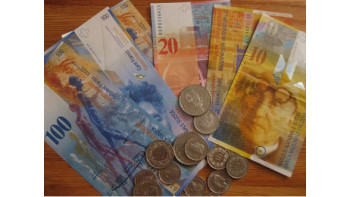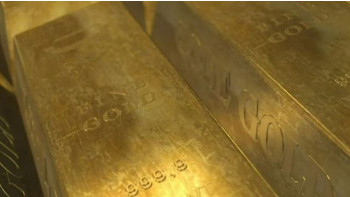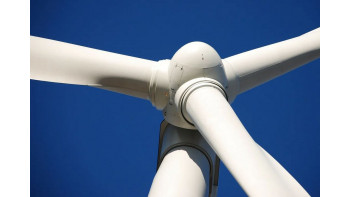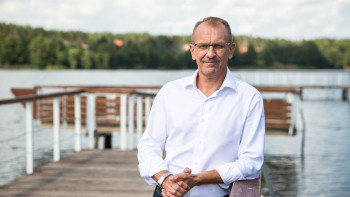The Danish Energy Agency has granted Nord Stream 2 AG permission to build part of the Nord Stream 2 gas pipeline on the country's continental shelf southeast of Bornholm in the Baltic Sea. There are two options for the route: 147km-long and 175km-long.
Since 2007, Russia has attempted to adjust the Nord Stream route to circumvent chemical munitions dumping sites east of Bornholm, but these efforts have faced many complications, including due to the lack of data on the exact locations of dumped munitions.
Between 1947 and 1948, the Soviet Union dumped east of Bornholm Island an arsenal of chemical weapons, left after World War 2, containing warfare agents, in particular, adamsite, diphenylchlorarsine, and mustard gas. The designated dumping area has a radius of three nautical miles at 55º07′ - 55º26′ north latitude and 15º25′-15º55′ east longitude. The disposal was carried out through dumping munitions (aircraft bombs and artillery mines and shells) into the sea. It has been established that part of the arsenal was dumped in cases while ships carrying them were still on their way to the designated area, and part of the wooden cases was drawn by currents and tide beyond the said area, and that's where they sank. Cases were reported where people would find munitions cases along the coasts of Bornholm and the southern coast of Sweden. Thus, the exact location of the entire arsenal of chemical weapons disposed of in the Baltic Sea remains unknown. In many instances, fishermen found munitions outside the designated dumping site.
The 2009 Nord Stream Espoo Report: Key Issue Paper Munitions: Conventional and Chemical states that the only way to clear the seabed of chemical munitions is to detonate them. However, the detonation of chemical munitions will lead to a widening of the contamination zone and the rise of toxic substances into the surface layers of the sea, which will contribute to pollution and affect marine organisms.
The vast majority of the Baltic Sea bottom is covered with green, black or brown soft gyttja clay. Thus, the detection of dumping sites is complicated by the properties of the seabed.
Due to the gas pipeline laying there is a high likelihood of damage to the integrity of munitions or their detonation, which will result in large-scale damage to the Baltic Sea. Also, the detonation of munitions is not excluded after the gas pipeline is launched, due to vibration – that's if the pipe has been laid over a dumping site.
Paragraph 2 of article 2 of the Espoo Convention specifies that each Party shall take the necessary legal, administrative or other measures to implement the provisions of this Convention, including, with respect to proposed activities listed in Appendix I that are likely to cause significant adverse transboundary impact, the establishment of an environmental impact assessment procedure that permits public participation and preparation of the environmental impact assessment documentation described in Appendix II.
According to the Implementation Committee of the Espoo Convention, even low probability of adverse transboundary environmental impact from proposed activities should be sufficient for the occurrence of the obligation regarding the notification of affected Parties in accordance with article 3 (see the paper «the Opinions of the Implementation Committee for the period 2001-2010»).
It is considered that Baltic countries would be affected by a significant adverse transboundary impact of the proposed activity of the Nord Stream 2 project for the reasons outlined below.
The complex of works related to the intended construction of the Nord Stream 2 gas pipeline along the Baltic Sea bottom may have a negative impact on the marine biota, especially the bottom biocenoses, due to the disturbance of the structure of bottom ecosystems, the destruction of habitats of the bottom species of the fauna, benthic groups along the route of the gas pipeline and adjacent areas of the bottom due to the corresponding construction and technological works. The operation of pipeline equipment at sea poses the risk of pollution of the marine environment by various substances.
It may also have a negative impact on Ramsar sites, which located in the Baltic Sea basin.
Also, the operation of the proposed activity is to seriously affect current gas transportation/supply infrastructure in Ukraine, which in turn will have adverse environmental and related socio-economic effects in Ukraine.
In this regard, it would be affected by a significant adverse transboundary impact of a proposed activity of the Nord Stream 2 project and the provisions of the Espoo Convention shall apply accordingly.
According to the Decision IS/1 of the Meeting of the Parties to the Espoo Convention, Intermediary Session (5-7 February 2019): “Where no notification has taken place in accordance with article 3, paragraph 1 of the Convention, but where a Party that considers that it would be affected by a likely significant transboundary environmental effect impact of a proposed activity listed in appendix I to the Convention enters into discussions on the application of an EIA procedure the Convention with the Party of origin, that discussion should be conducted under article 3, paragraph 7, of the Convention. It may also be regarded as good practice to offer Parties that have indicated their wish to be notified under article 3 paragraph 1 an opportunity to receive a notification in line with the provisions of the Convention”.
















